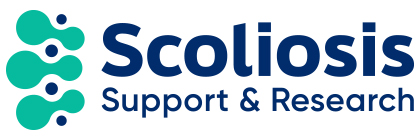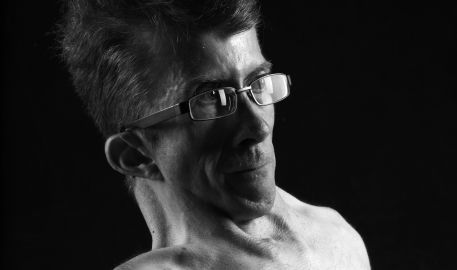Monday – Friday 9am to 5pm
Syndromic scoliosis
Syndromic scoliosis means that a sideways curve of the spine develops as part of a syndrome. A syndrome is a condition that is made up of lots of symptoms (signs) that appear together.
Some syndromes where scoliosis is likely to happen are connective tissue disorders (Marfan’s and Ehlers-Danlos syndrome), trisomy 21, Prada-Willi, Retts syndrome and Beale’s syndrome.
Cause
Syndromic scoliosis means that a sideways curve of the spine develops as part of a syndrome. A syndrome is a condition that is made up of lots of symptoms (signs) that appear together. Some syndromes in which scoliosis is likely to occur are connective tissue disorders (Marfan’s and Ehlers-Danlos syndrome), trisomy 21, Prada-Willi, Retts syndrome and Beale’s syndrome.
Diagnosis
Most patients are diagnosed with a syndrome in their early years. The medical staff involved in their care will be aware that scoliosis may occur. The patient will therefore be checked regularly for signs of curvature in their spine.
Treatment
Depending on the child’s age and underlying condition the treatment may be similar to treatment offered for idiopathic scoliosis. Some syndromes might mean a patient is not mobile. In these cases, seating aids may be used to allow the child to sit more comfortably in their chair. Surgery may also be offered to allow the child to sit more comfortably.
Monitoring
In some cases, no treatment will be needed and the child will simply be checked regularly by a scoliosis specialist, usually every 6 months or a year. During times when the child is growing more slowly, monitoring may up to every 2 years.
Casting
Young children with syndromic scoliosis may benefit from having a spinal cast (sometimes called a plaster jacket). This cast helps to guide the growing spine and may improve the shape of the spine as it grows or may stop the curve getting worse. Casts start from the underarms and cover the whole of the trunk (upper half of the body also known as the torso).
The cast is made of light materials (fibreglass or plaster-of-Paris). It cannot be removed but is changed regularly as the child grows and the shape of the back starts to change. Casts need to be done in a special way. They have a hole in the chest or stomach area so that the lungs and trunk can expand and the child can eat and breathe properly.
In children under 2 years old, the cast will be changed every 2-3 months with the aim of making the spine straight.
Many parents find it easier for their child to wear a cast because it avoids the problem of getting the child to wear a brace each day. However, a removable brace may still be needed after this treatment.
Bracing
If the curve is getting bigger, and the child is still growing, the specialist may want to put the child in a brace.
A brace does not usually reduce the size of the curve. The aim of bracing is to stop the curve getting bigger too quickly. Slowing down progression lets the child keep growing for longer before a more permanent treatment, such as surgery, is needed. Braces are usually worn 20 hours per day. They can be taken off for bathing, sports, and a break in the morning and evening. As the child grows, new braces will need to be made.
Surgery
If casts and braces don’t stop a curve getting bigger the child may need an operation. The most common type of operation for children under the age of 10 is to attach growing rods to the child’s spine.
Growing rods help to guide the spine as it grows so that the curve does not get too much bigger. The rods are usually attached to the spine above and below the curve. They can reduce it by up to half the size when first fitted. The child then returns to hospital every 4 to 6 months for the rods to be made longer to keep up with their growth.
The rods might be lengthened by a short operation (small cut, usually just an overnight stay in hospital). There is also a type of rod that can be lengthened without this surgery. These rods are called magnetic rods. They are lengthened by a magnet. The lengthening is quick and painless. With magnetic rods no surgery is needed to lengthen the rods and the child is awake as it is done, usually in the outpatient clinic
Some children will have to wear a brace to protect the rods. When the child becomes older and the spine has grown, the doctor will remove the rods.
At this stage, usually the patient will have a final spinal operation called a spinal fusion. In some cases surgery will not be possible because of other health conditions caused by the syndrome.
Prognosis
For someone who has scoliosis due to a syndrome, the aim of surgery would be to control the curve in a safe and comfortable position to allow for the patient’s other health needs.
Some neurological conditions mean there are changes and complications as the person gets older. This means the spinal curve might change or a further curvature could develop, even if surgery has been successful.
Frequently asked questions
Here is a selection of common questions we are asked by callers on our Helpline. If there is other information needed or for further advice please do not hesitate to call us on: 020 8964 1166 or e-mail: info@sauk.org.uk
Scoliosis is a sideways curvature of the spine. Syndromic scoliosis means that curvature of the spine developed as part of a syndrome. A syndrome is a condition that is made up of lots of symptoms (signs) that appear together. Some syndromes where scoliosis is likely to happen are connective tissue disorders (Marfan and Ehlers-Danlos syndrome),trisomy 21, Prada-Willi syndrome, Retts syndrome and Beale’s syndrome.
A patient will be diagnosed with a syndrome in their early years. The medical staff involved in their care will be aware that scoliosis can occur as part of their condition. The patient will therefore be checked regularly for signs of curvature in their spine.
If your child is diagnosed with scoliosis it is important that they see a scoliosis specialist. There are around 30 scoliosis centres across the UK and you can find your nearest specialist by calling or emailing SAUK. You will need to take these names to your GP, who will arrange a referral to see a specialist. You will then receive a letter in the post with your appointment date and time.
At your first consultation you will be examined by the specialist, X-rays will be taken, and you will be told the Cobb angle. The Cobb angle is measured in degrees, and will tell you how big the curve is and allows the specialist to compare the size of the curve between appointments. The specialist may decide to monitor the child’s curve by taking X-Rays every 6 months or once a year.
Surgery may be offered if the curve is worsening or shows signs of becoming stiffer. Some syndromes might mean a patient is not mobile. If this is the case, seating aids may be used to allow the child to sit more comfortably in their chair. Surgery may also be an option to allow the child to sit more comfortably
For someone who has scoliosis due to a syndrome, the aim of surgery would be to control the curve in a safe and comfortable position to allow for the patient’s other health needs. Some neurological conditions mean there are changes and complications as the person gets older. This means the spinal curve might change or a further curvature could develop, even if surgery has been successful
It is quite usual to feel confused about what course of treatment to choose for you or your child. There is a lot of information to take in and some of the questions about scoliosis have no clear answer. It is absolutely fine to ask your specialist further questions, or ask for a second opinion.
If you need names of other centres or specialists then you can get this information from us by calling or emailing the SAUK Helpline. You may also find that it helps to talk through the specialist’s advice with someone. The friendly SAUK team are always happy to offer advice, support and a listening ear. You can ask us as many questions as you like and we will try to help. It sometimes helps to speak to people who have been in a similar position. If you would like to speak to people affected by scoliosis, the SAUK membership scheme can help you to do so.
It is your right to ask for a second opinion from another specialist at the same or a different hospital.
Also every hospital has a patient advice and liaison service (PALS). If you are unhappy with the way that you have been treated or have any other worry or concern about your care, you can seek advice from the PALS service linked to your hospital, which will be happy to help.
For patients in Scotland you can contact the Patient Advice and Support Service http://www.patientadvicescotland.org.uk/
Patients in Northern Ireland can contact http://www.patientclientcouncil.hscni.net/
If you would like to talk further about any aspect of scoliosis, SAUK is here to help; please call our helpline or contact us via post or using our e-mail address info@sauk.org.uk.
© 2024 Scoliosis Support & Research | Scoliosis Support & Research is a registered charity no. 1181463
Website design & development by Pedalo

